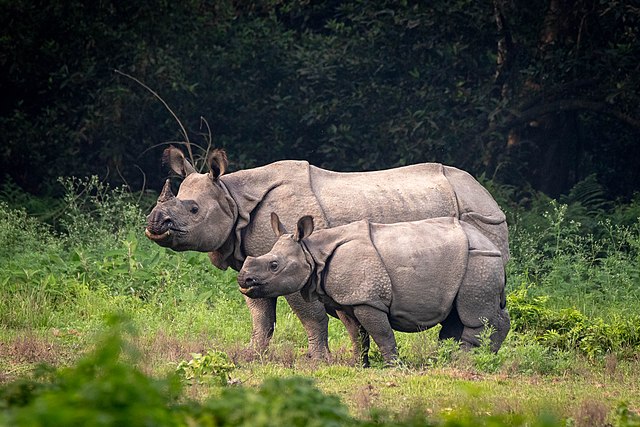 Did you know that the current population of one-horned rhinos in Nepal is greater than it has ever been in 20 years?
Did you know that the current population of one-horned rhinos in Nepal is greater than it has ever been in 20 years?
In the latest count by the Department of National Parks and Wildlife Conservation, the number of one-horned rhinos was at 752, as compared to 645 in 2015.
The majority of the rhinos were found in Chitwan National Park. The species headcount took 3 weeks and required 350 trained forest managers to travel the territory on domesticated elephants to count each individual rhino.
Let’s dive into the decline and revival of the one-horned rhino population in Nepal.
What Led to the Decline?
 Nepal was once home to a thousand one-horned rhinos. However, political instability and large-scale settlement of people in the 1960s wiped out the population to a mere 100. The species was nearly extinct as a result of poaching, deforestation, and habitat loss.
Nepal was once home to a thousand one-horned rhinos. However, political instability and large-scale settlement of people in the 1960s wiped out the population to a mere 100. The species was nearly extinct as a result of poaching, deforestation, and habitat loss.
Today, the one-horned rhino is extinct in Bhutan and Bangladesh, and 2,200 remain in India and Nepal. The greatest threats posed to the species are poaching and loss of habitat. The one-horn rhino is poached (illegally hunted) by wildlife traffickers for its horn, which is traditionally used in some Asian medicines. However, there is no scientific evidence that suggests that the horn provides any health benefits.
Additionally, like other animals, the one-horned rhino suffers from disturbances in its natural habitat, which contributes to the decline of the population.
Natural causes and natural disasters also cause death on top of poaching. Old age, territorial fights, flooding, and disease have also contributed to the death of 160 rhinos since 2015. Recently flooding has even swept rhinos from Nepal all the way to India.
What Led to the Revival?
The increased population of the greater one-horned rhino is one of the most successful conservation efforts in Asia. The species has moved up from endangered to vulnerable on the International Union for Conservation of Nature's Red List.
The revival of this species resulted from several changes, including increased investments in habitat management, anti-poaching efforts, and the transfer of rhinos between habitats.
On top of these changes, the Covid-19 pandemic has enabled the growth of the population. Lockdowns suspended tourism, which allowed the habitats to revitalize and the animals to remain undisturbed by humans. However, several other conservation projects have been less successful during the pandemic. The drop in tourism has reduced funding for sanctuaries in parts of South America and Africa.
Even as we celebrate the growth of the one-horned rhino population in Nepal, it is important that we learn the lessons to protect vulnerable and endangered species elsewhere.
Sources: BBC, CNN, WWF, Natureworldnews










